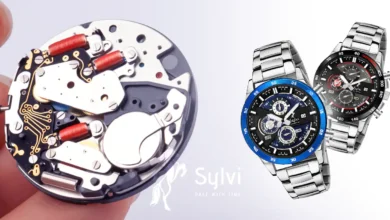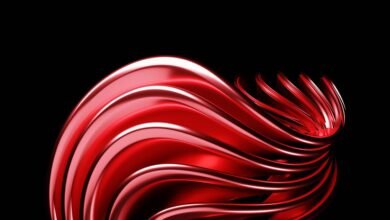The Dynamic World of LED Screen Manufacturers

Introduction
In today’s digital age, LED screens are indispensable in various sectors, ranging from advertising and entertainment to corporate communications and public information displays. The technology behind these vibrant displays is constantly evolving, thanks to the innovation and expertise of LED screen manufacturers. This article explores the journey of LED screen manufacturers, their technological advancements, market trends, applications, and the future of LED screen technology.
The Evolution of LED Screen Technology
Early Developments
LED technology, which stands for Light Emitting Diode, has been around since the 1960s. Initially, LEDs were used as simple indicator lights in electronic devices. However, advancements in semiconductor technology and materials science in the late 20th century enabled LEDs to emit brighter light and come in a variety of colors, setting the stage for their use in larger displays.
Breakthroughs in Display Technology
The 1990s and 2000s saw significant breakthroughs that transformed LEDs from basic lights to the foundation of modern display technology. The development of high-brightness LEDs and improvements in color rendering allowed manufacturers to create large, high-resolution screens capable of producing vivid and dynamic images. This era marked the beginning of the widespread adoption of LED screens in various industries.
Leading LED Screen Manufacturers
Pioneers and Market Leaders
Several companies have emerged as leaders in the LED screen manufacturing industry. Companies like Samsung, LG, and Leyard have consistently pushed the boundaries of LED technology, offering innovative solutions that cater to a wide range of applications. These manufacturers have set high standards in terms of quality, reliability, and performance, driving the industry’s growth.
The Manufacturing Process
The production of LED screens involves a complex and precise manufacturing process. It starts with the creation of LED chips, which are then encapsulated to protect them from environmental factors. These chips are arranged in modules that form the building blocks of LED screens. The modules are then assembled into larger panels, which are tested for performance, durability, and energy efficiency. Quality control is crucial at every stage to ensure the final product meets the high standards required for various applications.
Technological Innovations in LED Screens
High-Resolution Displays
One of the most significant advancements in LED screen technology is the development of high-resolution displays. By reducing the pixel pitch—the distance between individual LED pixels—manufacturers can create screens with higher pixel density, resulting in sharper and more detailed images. High-resolution LED screens are ideal for applications that demand visual clarity, such as digital signage, broadcast, and medical imaging.
Energy Efficiency
Energy efficiency has become a critical focus for LED screen manufacturers. Advances in LED technology have led to screens that consume less power while delivering brighter and more vibrant images. This is particularly important for large-scale installations, where energy consumption can be substantial. Manufacturers are continually exploring new ways to enhance the energy efficiency of their products, aligning with global sustainability goals.
Flexible and Transparent Screens
Innovations in materials and manufacturing techniques have given rise to flexible and transparent LED screens. Flexible screens can be bent or curved, allowing for creative and unconventional installations. Transparent screens, on the other hand, offer a futuristic look by displaying content while remaining see-through. These technologies open up new possibilities for architectural and retail applications, providing both aesthetic appeal and functional value.
Market Trends and Applications
Digital Signage and Advertising
Digital signage and advertising are among the primary applications of LED screens. Businesses across various industries use LED screens to create eye-catching advertisements and engaging content. The ability to display dynamic and interactive content makes LED screens a powerful tool for attracting and retaining customer attention. Manufacturers offer customizable solutions that cater to the specific needs of advertisers, enabling impactful and memorable campaigns.
Sports and Entertainment
The sports and entertainment industries have embraced LED screens for their ability to enhance the spectator experience. Large LED screens in stadiums and arenas provide clear and vibrant visuals, ensuring that every spectator has a great view. These screens are used to display live game scores, instant replays, and advertisements, creating an immersive and engaging atmosphere. Manufacturers continue to develop high-performance screens that deliver exceptional quality in these demanding environments.
Corporate and Education
In corporate and educational settings, LED screens are used for presentations, meetings, and collaborative workspaces. Interactive LED screens and video walls enable dynamic presentations and real-time collaboration. Manufacturers focus on developing screens with features like touch interactivity, seamless connectivity, and high durability to meet the specific needs of these sectors. The ability to display clear and detailed content enhances communication and productivity.
Public Information Displays
Governments and municipalities use LED screens to disseminate important information to the public. These screens are installed in various locations, such as transportation hubs, public squares, and government buildings, to display traffic updates, weather forecasts, emergency alerts, and public service announcements. LED screen manufacturers offer solutions that are easy to manage and can be integrated with various communication systems, ensuring timely and effective information dissemination.
Challenges and Future Outlook
Competition and Market Dynamics
The LED screen manufacturing industry is highly competitive, with numerous players vying for market share. This competition drives innovation but also presents challenges in terms of pricing and differentiation. Manufacturers must continuously innovate and offer unique solutions to stand out in a crowded market. The ability to adapt to changing market dynamics and customer preferences is crucial for success.
Sustainability and Environmental Impact
As the demand for LED screens grows, so does the need for sustainable manufacturing practices. LED screen manufacturers are exploring ways to reduce the environmental impact of their products. This includes using eco-friendly materials, improving manufacturer led screens energy efficiency, and implementing recycling programs for end-of-life screens. Sustainability efforts not only benefit the environment but also resonate with environmentally conscious consumers and businesses.
Future Innovations
The future of LED screen technology looks promising, with ongoing research into areas like micro-LEDs and quantum dots. These technologies have the potential to further enhance display quality, energy efficiency, and durability. Micro-LEDs, for example, offer superior brightness and color accuracy, making them ideal for high-end applications. Quantum dots can improve color reproduction and energy efficiency, pushing the boundaries of what LED screens can achieve.
Conclusion
LED screen manufacturers have played a pivotal role in transforming visual communication across various industries. Their innovations have led to the creation of high-performance screens that deliver stunning visuals, energy efficiency, and versatility. As technology continues to advance, LED screens will undoubtedly offer even more exciting possibilities, shaping the way we interact with digital content. The journey of LED screen manufacturers is a testament to the power of innovation and the endless potential of technology to enhance our visual experiences.







